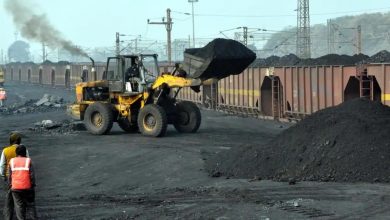Budget Should Aim To Make Agriculture Future Ready

The forthcoming Budget is being announced around the shadow of economic and social distress brought on by the pandemic. Hence, there are expectations and anticipations among economic players that the Budget would provide the toolkit of measures which would reboot the economy and take it to the path of growth.
And it is no less for one sector — agriculture — that continues to be of critical importance to the Indian economy with around 50 per cent of population depending on it for their livelihood. Contributing significantly to inclusive growth, the sector plays a vital role in India’s development journey. What is more this is one of the two sectors which has shown a steady and positive growth at 3.4 per cent during 2020-21.
Yet the sector is beset by major challenges. Among the major problems is the low productivity of agriculture. Despite being the world’s largest producer of milk, pulses and jute and ranking second in the production of rice, wheat, sugarcane, groundnut and vegetables, the challenge of low yield continues to hurt the sector.
Some of the other problems relate to stagnation of yields, rising input costs, un-remunerative farm prices, poor price discovery, fragmented land holdings, low use of technology, inadequate mechanization, challenges of post-harvest management, among others. Given the situation, the Budget should give priority to the agriculture sector which, despite a healthy monsoon and record production, continues to suffer from pandemic induced distress. It is hoped that the Finance Minister would make path-breaking announcements which would double farmers’ income and take the sector to the road to prosperity. ICFA articulates a twelve-point strategy to make this possible.
1. Improve Agriculture Productivity
The most important issue before the Finance Minister is to improve agriculture productivity. The government should work towards ensuring that the share of gross capital formation by the government on agriculture and allied sectors as percentage of GVA, goes up from the almost stagnant level of around 0.5 percent at present.
This would be made possible by reorienting government spending towards investment in agriculture, particularly in agri-infrastructure. There is need to augment investment in agriculture in areas such as irrigation (both macro and micro irrigation) for efficient water use, rural infrastructure, rural roads, cold chains, water conservation works and storage
facilities, agricultural warehousing, etc. This would improve agriculture productivity and raise farmers’ income. Besides, micro-precision and drip irrigation should be further incentivised so that it is possible to get more crop per drop of water. In this context, the creation of Agri-
Infrastructure Fund by the government to support rural infrastructure is heartening and should be supported in the Budget.
Similarly, the agriculture supply chain needs to be strengthened and storage systems (of more than 1000 MT) at farm gate should be incentivized to reduce wastage and enable better prices for farmers.
2. Move towards Diversification of Agriculture
Diversification of agriculture from traditional crop cultivation to high value crops like horticulture as also animal husbandry, livestock, fisheries, diary etc. would also need additional Budget allocation to improve income opportunities in the hinterland.
No doubt, the government has acknowledged the need for substantial support and handholding to farm-based activities, such as livestock and fisheries. This is made evident by the provision of 12 per cent higher allocation for the animal husbandry & dairy sector in the Union Budget for FY21. This approach should be sustained for high value crops and allied activities in the forthcoming Budget as well.
Further, considering India’s significant dependence on imports of major commodities such as vegetable oils and pulses, there is need for additional allocation for enhancing the domestic production of these commodities.
3. Support Crop Insurance
The Budget should also help the farmers to address the challenges posed by the vagaries of weather by promoting crop insurance and ensure its extensive coverage which would help the farmer to overcome the crop damage arising from the vagaries of weather and issues related to climate change.
4. Rationalise Non-Productive Subsidies
There should be a reorientation of expenditure by rationalizing non-merit subsidies on electricity, water, fertilizer etc which result in the overuse of these inputs. No doubt, inputs like fertilizers are critical for raising farm production. But the skewed usage of nutrients, due to subsidization, is causing concern, as it has led to deterioration in soil quality and land productivity in certain states. Hence, balanced use of urea and other fertilisers should be promoted which would improve soil health and farm output.
The term for extension of urea subsidy, given by the Cabinet Committee of Economic Affairs, would come to the close in 2020 and this is an ideal opportunity to rationalize the subsidy. For the deserving, the subsidy should be provided directly to the farmer through direct benefit transfer.
5. Improve Soil Quality
To help improve soil quality, allocation should be made towards modernizing the existing soil testing labs and creating mobile soil testing labs for the benefit of small and marginal farmers who may not have testing facilities in the vicinity.
6. Ensure Credit Availability
Farmers need access to timely availability of credit to finance their pre and post- harvest operations. This is the most critical need of the farmer as a tool of production. It is suggested that non-banking finance companies be encouraged to provide loans to farmers at cost effective terms. The government should also consider providing interest subsidy on agriculture credit for purchase of equipment, improving irrigation and other areas of agri-infrastructure.
7. Promote Start-ups in Science based Agriculture
It is said that the first Green Revolution was driven by development of high yield hybrids besides fertilizer inputs and increased irrigation. However, the agricultural landscape has changed drastically since this intervention. And the second Green Revolution, currently underway, is based on an entirely new set of agriculture technologies or agtech to boost its productivity. Presently, we are witnessing the rise of agritech in India and start-ups which are increasingly contributing to this space. There are more than 450 startups in agritech which is involved in helping digitally transform Indian agriculture.
To promote science based modern agriculture, there is need to allocate funds to create an Agri Start-up Fund. This would encourage rural based start-ups to impart skills and train youth and farmers in scientific agriculture. Start-ups could work with farmers to bring technology solutions to agriculture. This would encourage adoption of Good Agricultural Practices to meet export market standards. Similarly, priority should also be given to R&D for agro-based activities and for promoting food safety and quality.
8. Promote Exports
Exports should also be the centerpiece of our agriculture strategy. According to ICFA studies, linking agriculture to the exports market significantly improves the cost and quality of the produce as well as that of the entire agri supply chain. But, most importantly it has a great price stabilizing effect on the domestic agri market, even if the exports are just 2% or less. Hence budget allocation for agro exports, which presently is less than even $200 million for all the agro boards put together, should be scaled up. Smaller countries in Europe or even the States like Wallonia in Belgium, have an annual budget of $400 million for export promotion. The allocation should be utilized to improve export credit, infrastructure, marketing, quality standards and India’s participation in the global value chain
9. Enhance Allocation on MNREGA
The government should consider enhancing its allocation on MNREGA, which serves as a safety net and a rural job guarantee scheme for rural residents as well as retuning migrants. Demand for work under the programme continues to remain considerably higher than comparable periods for last year and there was an unmet demand among households. The resources saved by rationalising electricity and fertilizer subsidy could be partly used for this scheme.
10. Permit Consolidation of Land Holdings
The Finance should consider permitting consolidation of land holdings through a model land leasing law. Presently, farming plots are of such small sizes that even doubling their incomes would leave them with meagre earnings. The land leasing law, which would lead to aggregation of land holdings, would pave the way for higher capital investment and thereby improve productivity. This would also provide lease income to the owner or create employment opportunities on the same land. This would encourage corporatization and benefit the farmer producer organisations.
At the same time, the introduction of new scheme on vertical farming could be brought upfront to supplement the scarcity of land whereby support can be designed for promotional campaigns and incentives on investments such as new equipment, systems, and allied infrastructure.
11. Promote Food Processing
Food processing industry has the potential to address the deficiencies in agri- supply chain as also help create a fair and equitable agricultural market while ensuring an attractive remuneration for farmers. The agriculture sector would gain tremendously from linkages to food processing. There are numerous examples of industries such as diary, sugar, seeds etc where procurement by the food processing industry has improved farmers’ income and facilitated transfer of technology to the farm. Active support from the government to the food processing sector, together with interest subvention, could provide a further fillip to this sector. Further, the government should contemplate broadening the definition of agriculture to include the food processing industry so that the latter is eligible for same benefits as farm products.
12. Bring Agriculture in the Concurrent List
NITI Aayog’s suggestion that agriculture should be brought under the concurrent list so that the Union government can ensure a national market for agriculture products should be considered. A GST like Agriculture Council should be constituted to encourage long term cooperation and consensus building amongst states and center on agriculture and agri related issues.
Agriculture has emerged as a beacon of hope for the economy during the pandemic. It is hoped that the Union Budget continues to address the key concerns so that the sector contributes significantly to the vision of inclusive growth.
Views expressed here are those of Dr. MJ Khan, Chairman, Indian Chamber of Food and Agriculture




